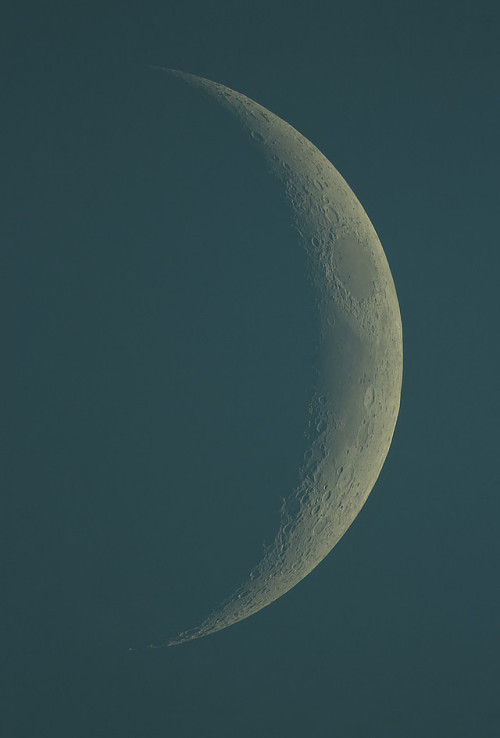
119 posts
Latest Posts by maryambutt - Page 4

The Ishtar Gate, main gate of Babylon built during the reign of Nebuchadnezzar II (605-562 BCE). Enamelled tiles, mythical animals, lions, and gods embellish the gate which was dedicated to goddess Ishtar of Babylon, Mesopotamia (Iraq). now in Berlin


Portrait of Lady Sunderland (detail) 1786. Joshua Reynolds






Knowledge is power and the library is our armoury

Hang Rái by Nguyen Trong Nhan



Poppies! 2020

This beautiful dark horse is the first of the sunflowers of the season! What a gorgeous soft burnt orange! 🌻😍🌅


Pas d'amoureux sur les bancs publics.

soundcloud | tumblr

The Mazette: and then Summer …
See the Closest Ever Images of the Sun
Solar Orbiter just released its first scientific data — including the closest images ever taken of the Sun.
Launched on February 9, 2020, Solar Orbiter is a collaboration between the European Space Agency and NASA, designed to study the Sun up close. Solar Orbiter completed its first close pass of the Sun on June 15, flying within 48 million miles of the Sun’s surface.
This is already closer to the Sun than any other spacecraft has taken pictures (our Parker Solar Probe mission has flown closer, but it doesn’t take pictures of the Sun). And over the next seven years, Solar Orbiter will inch even closer to the Sun while tilting its orbit above the plane of the planets, to peek at the Sun’s north and south poles, which have never been imaged before.
Here’s some of what Solar Orbiter has seen so far.
The Sun up close

Solar Orbiter’s Extreme Ultraviolet Imager, or EUI, sees the Sun in wavelengths of extreme ultraviolet light that are invisible to our eyes.

EUI captured images showing “campfires” dotting the Sun. These miniature bright spots are over a million times smaller than normal solar flares. They may be the nanoflares, or tiny explosions, long thought to help heat the Sun’s outer atmosphere, or corona, to its temperature 300 times hotter than the Sun’s surface. It will take more data to know for sure, but one thing’s certain: In EUI’s images, these campfires are all over the Sun.

The Polar and Helioseismic Imager, or PHI, maps the Sun’s magnetic field in a variety of ways. These images show several of the measurements PHI makes, including the magnetic field strength and direction and the speed of flow of solar material.
PHI will have its heyday later in the mission, as Solar Orbiter gradually tilts its orbit to 24 degrees above the plane of the planets, giving it a never-before-seen view of the poles. But its first images reveal the busy magnetic field on the solar surface.
Studying space
Solar Orbiter’s instruments don’t just focus on the Sun itself — it also carries instruments that study the space around the Sun and surrounding the spacecraft.

The Solar and Heliospheric Imager, or SoloHi, looks out the side of the Solar Orbiter spacecraft to see the solar wind, dust, and cosmic rays that fill the space between the Sun and the planets. SoloHi captured the relatively faint light reflecting off interplanetary dust known as the zodiacal light, the bright blob of light in the right of the image. Compared to the Sun, the zodiacal light is extremely dim – to see it, SoloHi had to reduce incoming sunlight by a trillion times. The straight bright feature on the very edge of the image is a baffle illuminated by reflections from the spacecraft’s solar array.

This first data release highlights Solar Orbiter’s images, but its in situ instruments also revealed some of their first measurements. The Solar Wind Analyser, or SWA instrument, made the first dedicated measurements of heavy ions — carbon, oxygen, silicon, and iron — in the solar wind from the inner heliosphere.
Read more about Solar Orbiter’s first data and see all the images on ESA’s website.
Make sure to follow us on Tumblr for your regular dose of space: http://nasa.tumblr.com



by Denny Bitte

_spots of green





instagram | ariellevey

instagram | asraigarden



Enceladus: An Icy, Ocean Moon
Enceladus, a moon of Saturn, is one of the most fascinating worlds in our solar system. Jets of water vapor spew from its southern pole, and beneath the ripped, icy surface is a salt water ocean that could contain hydrothermal vents similar to those found in the depths of Earth’s oceans.
Image Credit: NASA

on the edge





5 film photographs.
In memory of Gray-Card’s Year End Top 5 Photo Extravaganza.
Many thanks @luxlit for hosting this year!



blooming blues
in the evening sun
visual anodynes



garden of wishes


words end





